 Easter sneaks up on me every year. Maybe it’s because it sort of strolls around the calendar and I don’t have a date to remember from year to year like December 25 or July 4. It’s not that I don’t see the Peeps and Cadbury Eggs popping up on shelves at the drugstore, I just think to myself, “Oh, that’s ages away.” Except for then it isn’t. It’s right here.
Easter sneaks up on me every year. Maybe it’s because it sort of strolls around the calendar and I don’t have a date to remember from year to year like December 25 or July 4. It’s not that I don’t see the Peeps and Cadbury Eggs popping up on shelves at the drugstore, I just think to myself, “Oh, that’s ages away.” Except for then it isn’t. It’s right here.
When I do finally clue in that Easter is literally right around the corner, I feel compelled to make a baked good of some sort. Last year I made hot cross buns, and they were delightful. Honestly, I was going to make them again this year until I decided to sit down yesterday and search for “Easter Bread.” This took me to allrecipes.com, a good place to look for a basic recipe upon which to build. And then I saw a recipe for something I’d never even heard of before: Cornish Saffron Bread.
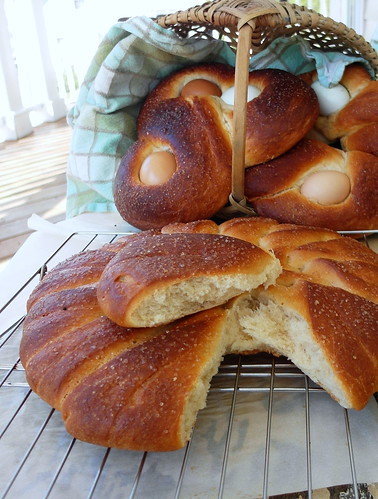
Would you like to save this post?
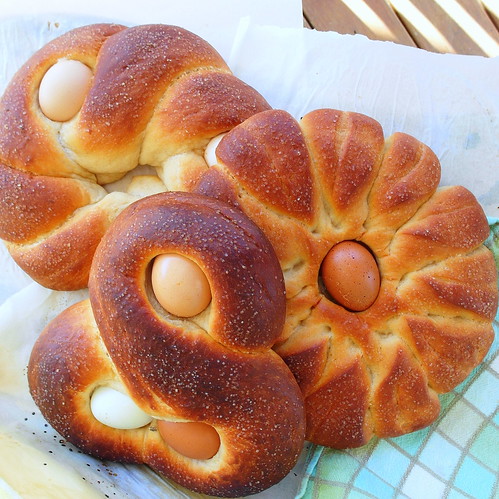 Tangzhong is made at a ratio of 1:5 flour to water/other liquid, so for 2.7 oz of flour (10% of the 27 oz in the recipe), I needed 13.5 ounces of liquid. I used the full 12 oz of milk called for and borrowed 1.5 oz of the water required for steeping the saffron. After making the Tangzhong (water roux), the rest is a straight dough method. The only other change I made was to add the 8 oz of softened butter in a bit at a time during kneading, much as you’d make a brioche dough. Feel free to melt the butter and add it with the rest of the ingredients if you’d rather do it that way.
As with all Tangzhong dough, this one is really sticky and takes a very long time to knead. You will think it won’t ever come together until it does. I suggest kneading it for 5-6 minutes on medium-low speed then covering and letting the dough rest for 20-30 minutes before going at it again. Total knead time, even with the rests, was almost 20 minutes for me. The resulting dough is so smooth, shiny and sexy that I forgave it for taking so long. I’m pretty sure you will, too.
Tangzhong is made at a ratio of 1:5 flour to water/other liquid, so for 2.7 oz of flour (10% of the 27 oz in the recipe), I needed 13.5 ounces of liquid. I used the full 12 oz of milk called for and borrowed 1.5 oz of the water required for steeping the saffron. After making the Tangzhong (water roux), the rest is a straight dough method. The only other change I made was to add the 8 oz of softened butter in a bit at a time during kneading, much as you’d make a brioche dough. Feel free to melt the butter and add it with the rest of the ingredients if you’d rather do it that way.
As with all Tangzhong dough, this one is really sticky and takes a very long time to knead. You will think it won’t ever come together until it does. I suggest kneading it for 5-6 minutes on medium-low speed then covering and letting the dough rest for 20-30 minutes before going at it again. Total knead time, even with the rests, was almost 20 minutes for me. The resulting dough is so smooth, shiny and sexy that I forgave it for taking so long. I’m pretty sure you will, too.
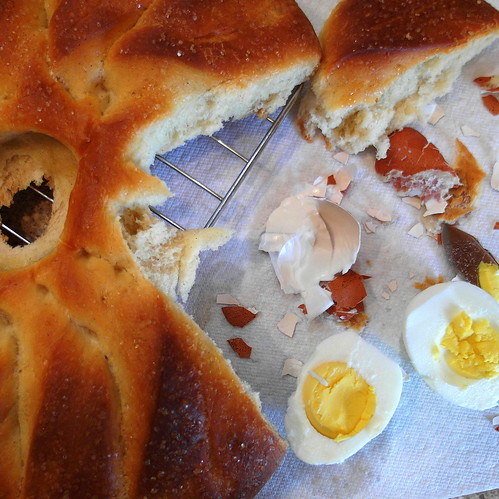
Making this bread with the amount of yeast I used (not a lot) turns this into a two-day process. I’m fine with that because the payoff is in amazing flavor. If you want to make this in one day you can double the yeast, but will still be an all day affair (most of it spent waiting around, so you can do other things as the dough rises).
Pastry Chef Online Participates in Affiliate Programs. If you make a purchase through one of my links, I may earn a small commission. For more information click to read my disclosure policy
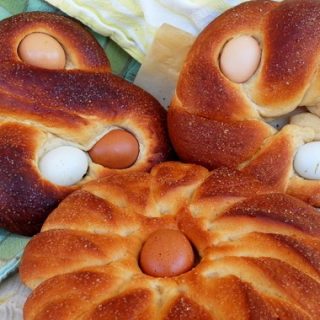
Cornish Saffron Bread: Tangzhong Method
Would you like to save this post?
Equipment
Ingredients
For the Tangzhong
- 2.7 oz bread flour (I use King Arthur)
- 12 oz whole milk
- 1.5 oz water
For the Dough
- All the Tangzhong , cooled to lukewarm
- 24.3 oz bread flour
- 2 large eggs
- 2 teaspoons kosher salt
- 7 oz 1 cup granulated sugar (you can cut back on this by up to half if you like your bread less sweet)
- ¼ oz 7 grams active dry yeast (double to 1/2 oz if you want the process to go more quickly)
- zest of 2 medium lemons
- 1 teaspoon cinnamon
- ½ teaspoon freshly grated nutmeg
- 1-2 teaspoons of saffron steeped in 2.5 oz boiling water
- 8 oz 1 cup or 2 sticks unsalted butter, soft but not greasy
For the Optional Decoration
- eggs , either dyed or natural. I used mine raw and they baked in the oven to a perfect "hard boiled"
Instructions
For the Tangzhong
- Combine the flour, milk and water in a small saucepan.
- Heat, stirring constantly, until the mixture thickens up. It should be about the consistency of pancake batter.
- Cover and set aside to cool for 15-20 minutes, stirring occasionally.
For the Bread
- Combine all the ingredients except for the butter in the bowl of your stand mixer.
- Mix with the dough hook on low speed until you have a very shaggy dough.
- Knead on medium low speed for about 5 minutes. The dough will still be a mess--all sticking in the bottom and on the sides of the bowl--and you will feel sad. Worry not. All will be okay.
- Turn off the mixer and cover the bowl with a towel. Go do something for 20 minutes or so.
- Knead again on medium-low speed for another 5 minutes. As the dough is kneading, add the butter about a tablespoon at a time, making sure each addition is at least mostly incorporated before adding the next addition. This whole process should take about 5 minutes. You will notice that, rather counter-intuitively, the dough starts to behave itself a bit better with much less sticking on the sides of the bowl but still rather a lot in the bottom. Carry on.
- Once the butter is completely incorporated, turn off the mixer, cover the bowl with a towel, and walk away for another 20 minutes or so.
- Come back and knead for another 5-10 minutes. The dough is done when it is very extensible (you can pull on it and it stretches way more than you think it will) and passes the windowpane test. You'll know it's time to test it when the dough completely stops sticking in the bottom of the bowl. It will be soft but only minimally sticky, and you will breathe a sigh of relief and mutter "finally" under your breath.
- Form the dough into a ball and drop it back in your mixer bowl. Spray the top with some pan spray or with a neutral oil, and cover it up.
- Let it rise in a warm place until doubled. This could take 4-5 hours if you used the smaller quantity of yeast. At this point, if it's bedtime or you have other things to do, press the gases out of the dough, cover it again and shove it in the fridge until you can deal with it. I left mine overnight--about 10 hours.
- When the dough has doubled in size (or when you pull it out of the fridge), press out the gases and decide what you're going to do with it.
- You will have about 60 oz of dough. I scaled mine into 3 20oz portions. You can choose to make yours into buns (scale at 4 oz or so per bun) or one enormous braided wreath, or you could scale them to bake in loaf pans.
- If you braid the loaves, tuck the eggs in wherever you want. I just Googled pictures of "Easter Breads" on the Internet to get some ideas.
- Whatever you decide to do with it, shape each piece and place them on parchment-lined sheet pans or in loaf pans or even in cake pans or Pyrex, spray the tops, cover and let rise in a warm place until doubled in size. This will take a long time, especially if you used the smaller quantity of yeast. The dough is pretty rich, so just give it time.
- I brushed the tops of mine with milk and sprinkled them with turbinado sugar. You can do that if you want, or not.
- Bake at 450F for 5 minutes before reducing the heat to 350F until done. The internal temperature should be 200F (a couple of degrees either side is fine), and the bread will be deep golden brown to a medium toasty brown. If you find that your bread is browning too quickly, just cover it with a piece of foil.
- Total baking time for my 20 oz loaves was 25 minutes.
Shaping the sunburst loaf
- I don't know what to call the one with the egg in the center, so sunburst will do. It turned out so pretty that I thought I'd tell you how I made it--it was really, really easy!
- First shape the dough into a smooth round. Press it flat on the counter and roll it out into about a 10-11" circle. It should be about 1/2 inch thick.
- Using a bench knife (that's what I used) or a pizza cutter, cut into the disc from the outsides in toward the center, leaving about a 2 1/2" space in the center uncut.
- To keep the spacing even, I made cuts at 12:00, 3:00, 6:00 and 9:00 and then went back and divided those into thirds for a total of 12 cuts.
- Take each of the "branches" that you have cut and turn them over. Of course, they're attached and so you'll end up with a twist in the center.
- Then, take a sharp knife and slice into the center of each branch. Only slice down about 1/8-1/4".
- Cut a shallow "x" in the center of the dough and carefully open it up, making sure not to bust through the bottom.
- Tuck an egg in there. It will look like it's pretty much sitting on top of the dough, and I was afraid it wouldn't bake up nicely. But it did. Yay!
- And that's all there is to that one.
Did You Make Any Changes?
Nutrition
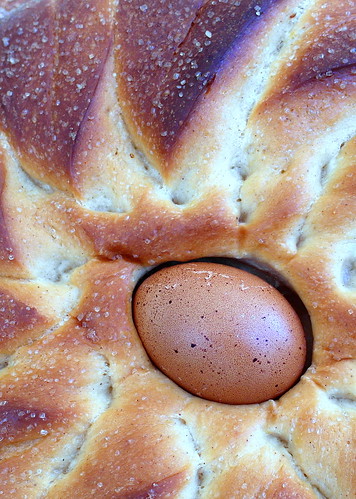 Thanks so much for spending some time here today. Now go bake some bread!
Have a lovely day and a very Happy Easter.
Thanks so much for spending some time here today. Now go bake some bread!
Have a lovely day and a very Happy Easter.

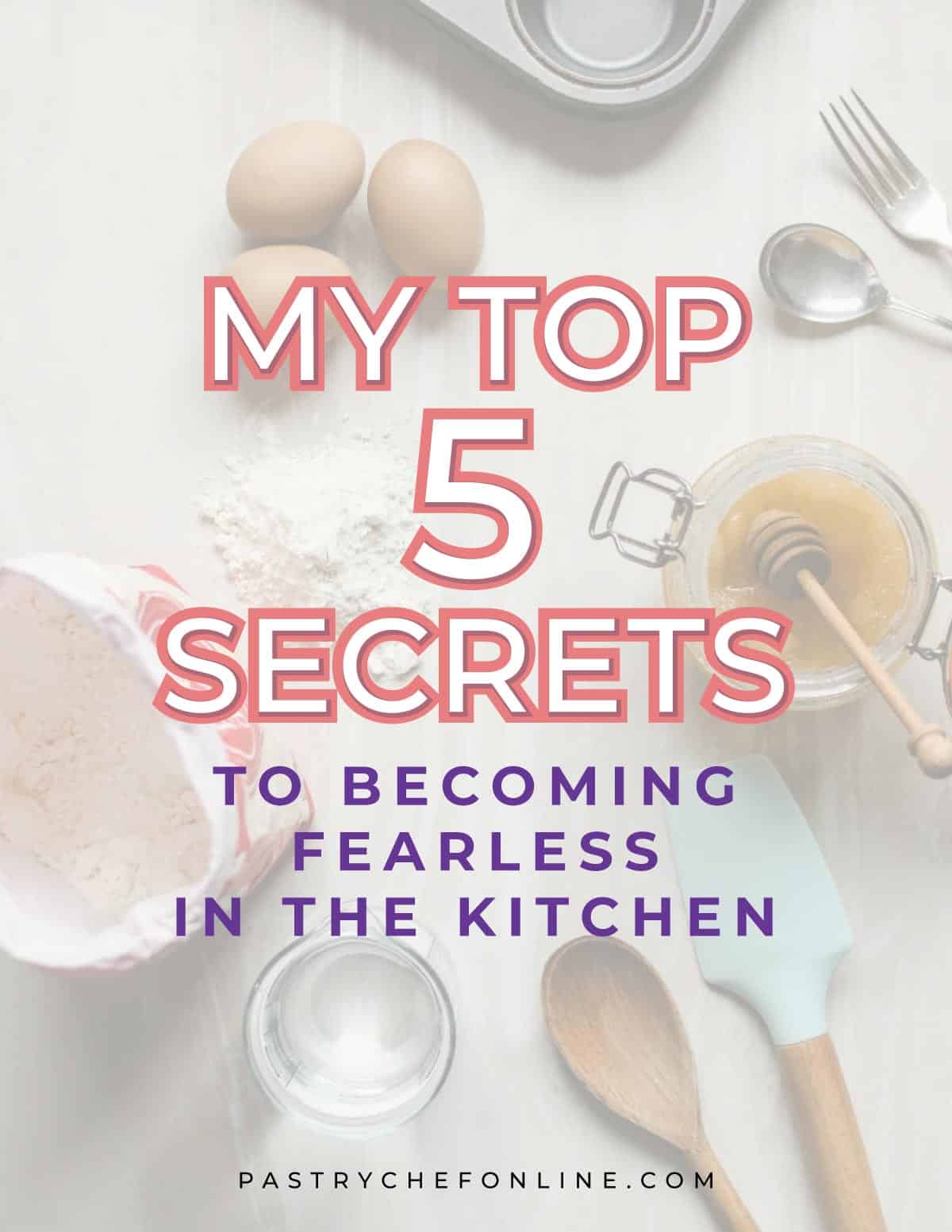
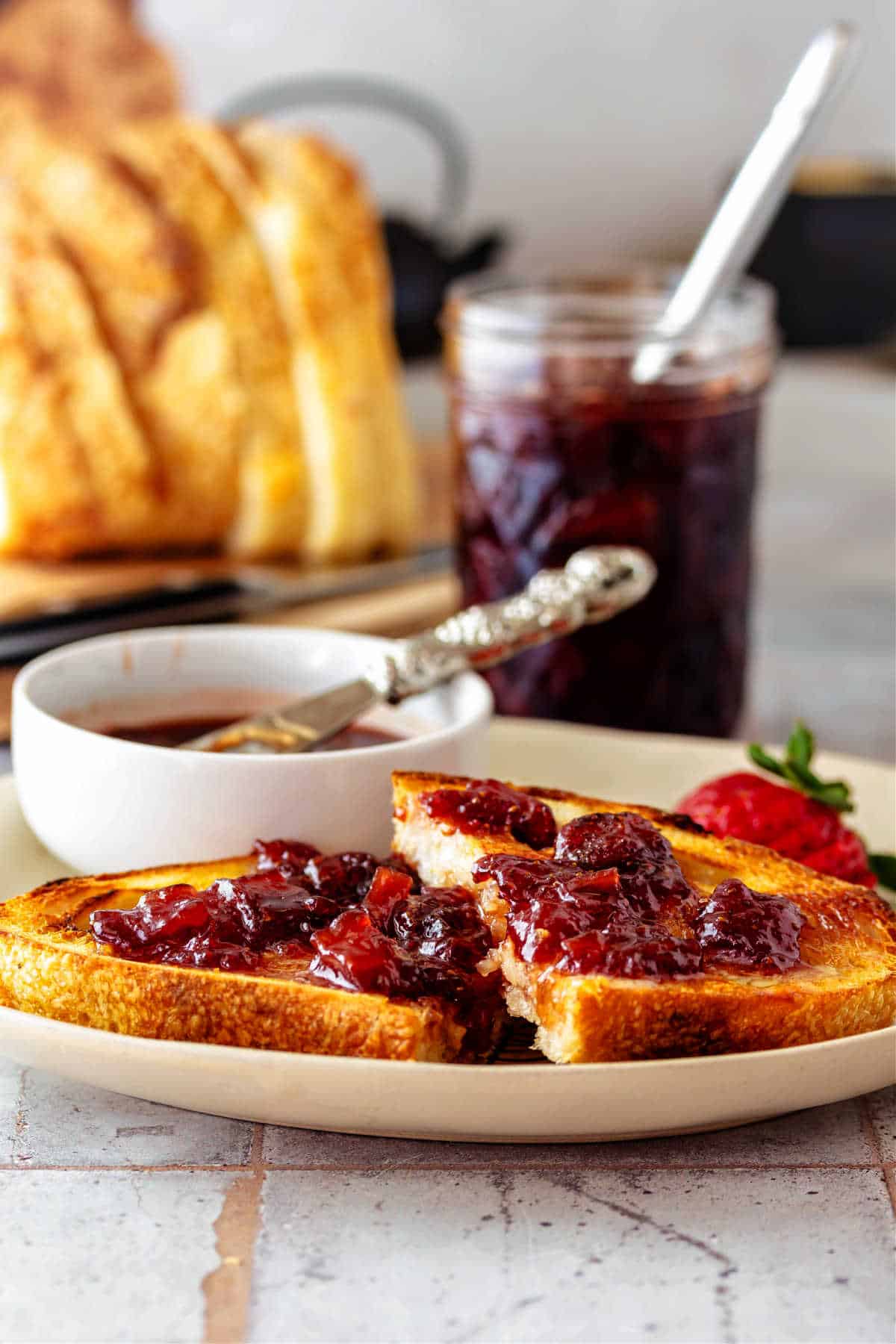
Join in Today!
Jenni, your bread loaves are beyond beautiful!
Thank you so much, Christine! I was really happy with them–especially that sunburst guy. Hope you had a wonderful Easter!